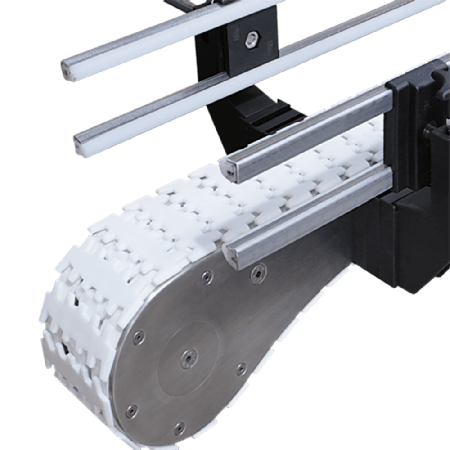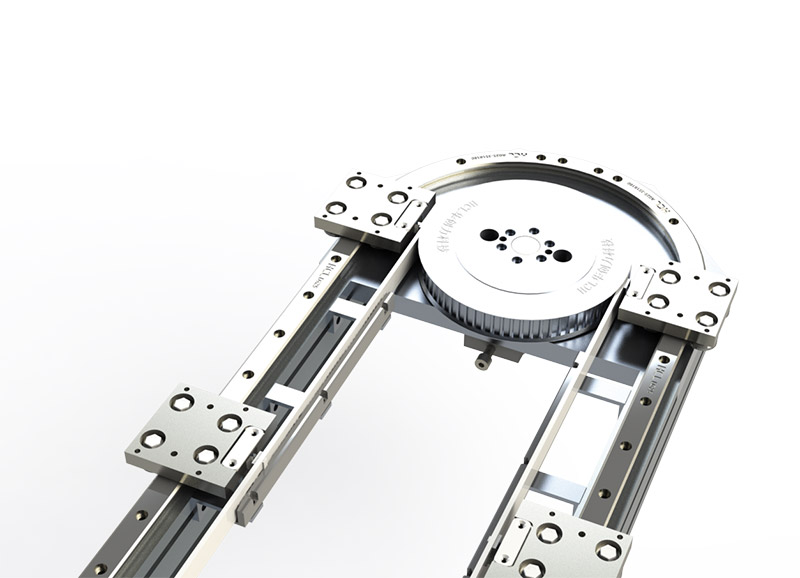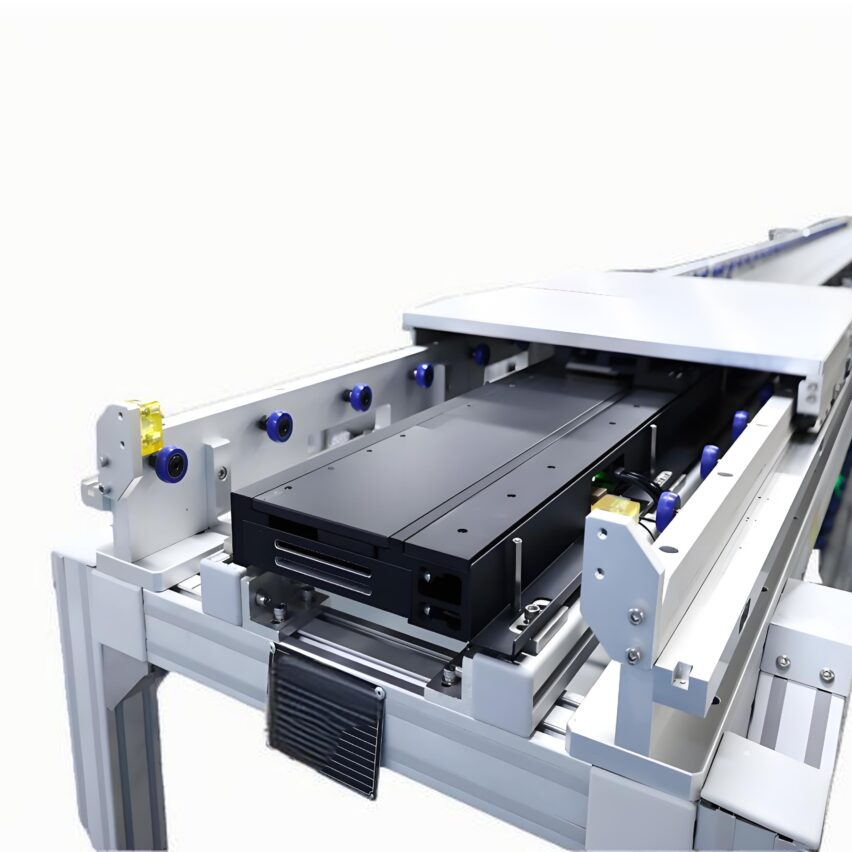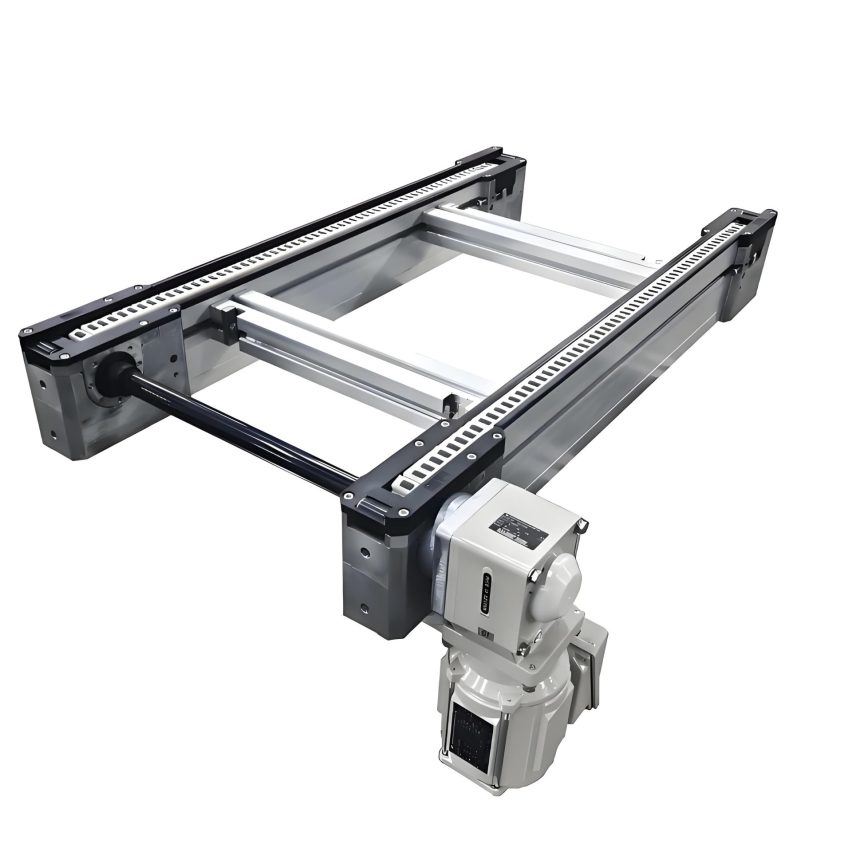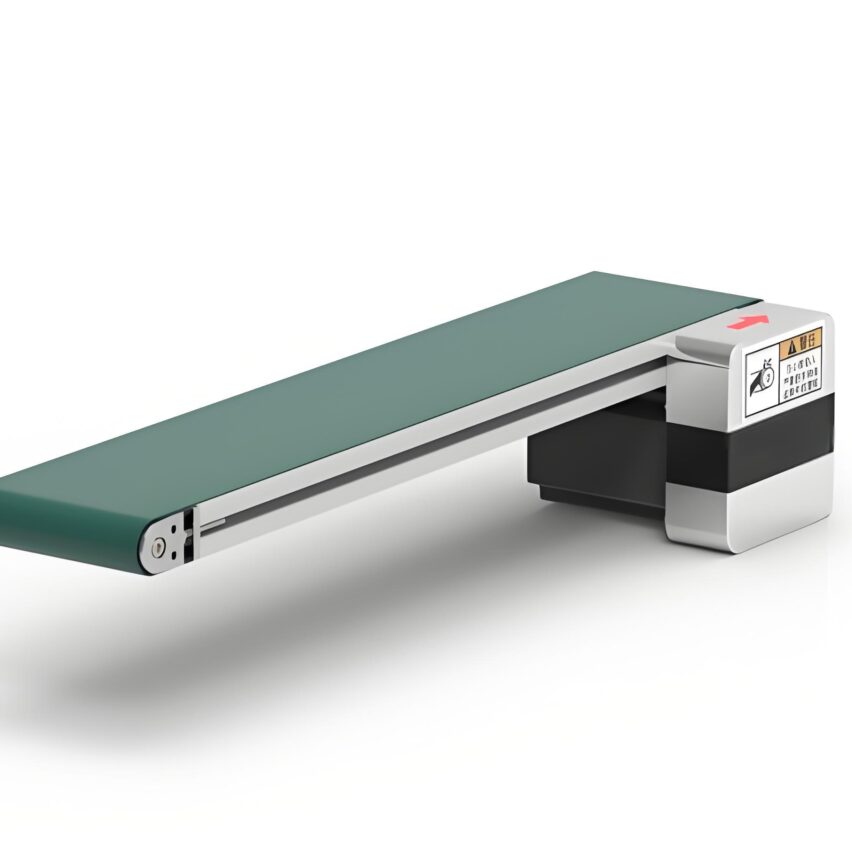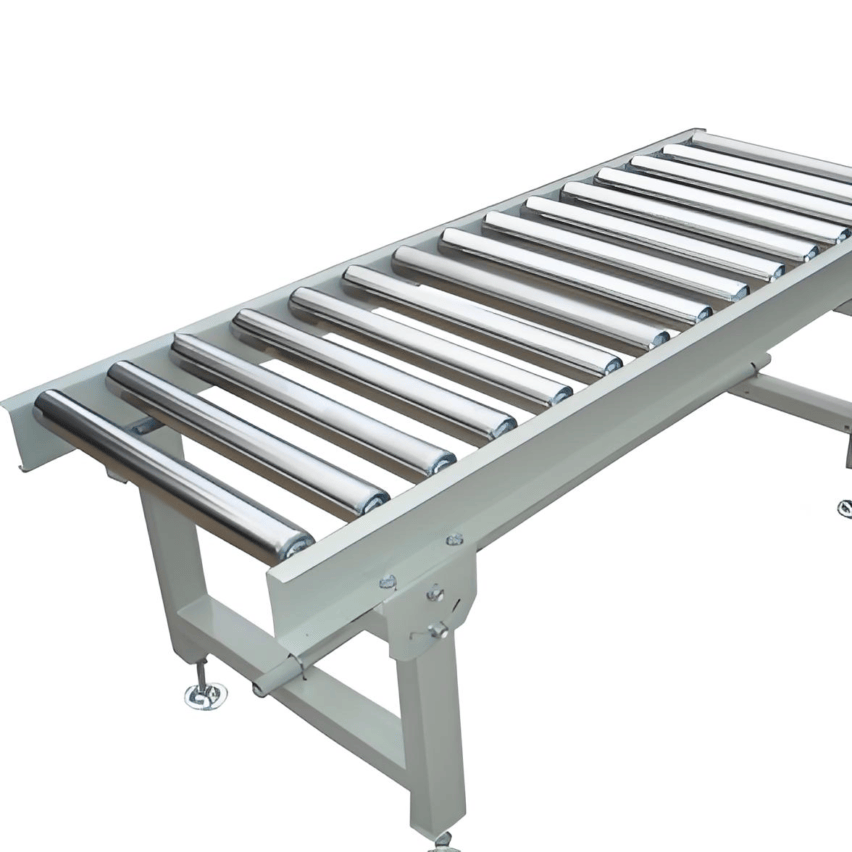On the Model Y production line at Tesla's Shanghai mega-factory, a silver guide rail snakes like a swimming dragon - when the body chassis enters the assembly area, the work plate suddenly slides to the workstation at three times the speed of the chain, and the robotic arm completes the tightening of the bolts in tandem. ThisThe kinetic miracle of the "slow chain, fast car"The Speed Chain System is the epitome of how the Speed Chain Line is disrupting traditional manufacturing. As the "arterial network" of modern industry, the Speed Chain system has been transformed from a mechanical conveyor belt to anNerve centre for fusing intelligent decision-making with flexible productionthat continues to push the boundaries of manufacturing efficiency.
▋Technology evolution: the leap from mechanical speed-up to intelligent decision-making
Speed chain technology is not new, and its beginnings can be traced back to the 19th century British belt conveyor. But the real revolutionary breakthrough happened in the 21st century - when the traditional speed increasing mechanism meets the digital control system, the mechanical transmission evolves to the"Physical + data" dual-drive system.. The central secret of the modern multiplier chain is triple evolution:
- structural innovationExtruded aluminium alloy profile guide rail replaces carbon steel structure, reducing the deadweight by 30% while increasing the load-bearing strength to 8t/m.
- Control Iteration: PLC combined with edge computing enables response speeds exceeding the 10ms level, enabling millisecond-level dynamic speed regulation.
- Energy consumption breakthroughPermanent magnet synchronous motor saves 35% energy, regenerative braking technology recovers 15% braking energy, overturning the law of "high speed = high energy consumption".
2025 Foxconn empirical data shows that the AI-enabled multiplier chain system compresses failure downtime to 1/6 of the traditional production line, confirming that theThe multiplier effect of intelligent algorithms on physical systemsThis evolution makes the production line to keep the basic speed of 2-20 metres/minute. This evolution makes the production line in maintaining 2-20 m / min basic speed, the actual movement of the workpiece plate speed can be up to 3 times the speed of the chain, to create "low-speed transmission, high-speed conveying" engineering wonders.
▋Core Mechanism: Differential Principle and Intelligent Synergistic Chemical Reaction
The magic of the multiplier chain comes from the seemingly simple principle of leverage: when the chain drives the rollers, the motion of the work plate at the point of contact with the rollers is synthesised into the actual conveying speed. But modern systems have upgraded this to a sophisticated synergy:
Dynamic Drive Systems
- Double pitch roller chain for equal speed transmission, differential chain for 2.5-3 times speed increase.
- Constant tension device automatically compensates for 0.5-2% chain elongation, eliminating the risk of "chain drop".
- Ceramic bearings keep operating noise below 55 dB, comparable to a library environment
Intelligent Control Matrix
- RFID sensors identify carriers in real time, triggering automatic process switching at the workstation.
- Pneumatic stopper positioning accuracy of ±0.1mm ensures precise robot operation.
- Digital twin previews 300+ production scenarios, virtual commissioning shortens production cycle 50%
The case of Qingdao Port is very convincing - through the hybrid scheduling of Speed Chain and AGV, the container turnaround time is compressed to 15 minutes, and the efficiency is increased by 400% compared with the traditional terminals. the essence of this synergy is thatDeep coupling of mechanical dynamics and information entropy.
▋Industry reshaping: penetration from electronics assembly to heavy manufacturing
The Speed Chain assembly line has broken through the traditional boundaries of electronics manufacturing and demonstrated amazing adaptability in three major areas:
Precision Manufacturing
→ Static dissipative chain (surface resistance 10⁶-10⁹Ω) eliminates electrostatic damage to the chip.
→ Anti-microvibration design ensures lithography-grade precision assembly
Heavy equipment area
- Nano-coated scraper conveyor improves abrasion resistance by three times for photovoltaic glass transfer
- High-temperature-resistant chains are subjected to 300°C heat treatment environment in engine assembly lines.
Logistics Sorting Field
- Crossbelt sortation systems with capacities up to 24,000 pieces/hour
- Dynamic routing algorithm reduces parcel misclassification to 0.01%
Haier washing machine mixed production case is more revelation - through the modular workpiece board system, the proportion of small batch custom orders soared from 15% to 68%, breaking the iron law of "large quantities of only economic".
▋Smart Convergence: Five Technologies to Reconfigure the Manufacturing Paradigm
The multiplier chain system is becoming a core vehicle for Industry 4.0, and its technological convergence presents distinctive features:
Edge Intelligence Layer
- Deployment of 200+ sensors per metre of track to build a data capillary network
- Localised AI models enable 10ms-level real-time decision-making
digital twin
- Physical production line vs. virtual model error rate <0.5%
- Parameter simulation accuracy up to 98%, fault prediction accuracy 92%
Yunbian Synergy Network
→ production instructions generated in the cloud with <1 second execution latency at the edge
→ Real-time quality data transmission, dynamic optimisation of process parameters
The practice of Sany Heavy Industry's 5G fully-connected factory shows that after the deep integration of Speed Chain system and MES, the order delivery cycle is compressed from 7 days to 8 hours, reconfiguring the logic of "manufacturing-delivery" time sequence.
▋Future battlegrounds: the dual evolution of greenness and resilience
In the face of the challenges of carbon neutrality and supply chain volatility, Speedchain technology presents two strategic shifts:
Green Manufacturing Revolution
- Bio-based composites reduce carbon footprint by 40%
- Solar-powered modules reduce CO₂ emissions by 1,200 tonnes per year
- Lightweight design reduces the amount of rare earth materials 30%
Resilience Reconstruction Project
- Modular architecture supports line reconfiguration within 8 hours
- Heterogeneous system compatibility technology for cross-brand device integration
- Blockchain traceability ensures transparency in spare parts supply chain
Data from a photovoltaic company in Zhejiang reveals that after green technological transformationEnergy cost share from 18% to 9%The payback period for environmental inputs has been reduced to 2.3 years. This evolution proves that sustainability and efficient production are not a zero-sum game.
▋Exclusive Insight: Rebalancing the Efficiency Paradox and the Ethics of Technology
After researching 37 manufacturing companies, I found an alarming phenomenon: 43% companies that introduced the Speed Chain system failed to achieve the expected benefits. The crux of the problem lies in getting caught up in"The Efficiency Trap"--Excessive pursuit of transmission speed while neglecting system synergy. Truly successful cases, such as the Weichai Blue Engine production line, have grasped the three balance points:
-
Resonance of Physics and Data
Each metre of conveyor line is both a material pathway and a data pipeline, requiring simultaneous optimisation of mechanical efficiency and information entropy. -
The dialectic of rigidity and flexibility
Growth mechanism needs mechanical stability, while intelligent control needs software flexibility, adopting "hardware modularity + algorithmic adaptive" architecture is the key to break the ice. -
Reconstruction of the human-machine relationship
Lessons from Tesla's factory show the need for AR-assisted systems to ease workers' cognitive load when multiplier chain beats exceed 90 seconds per unit
The next three years will present even deeper techno-ethical challenges:
- The data sovereignty dilemma: Dispute over ownership of production line data could cut off supply chain synergies
- employment structure fault lineAutomation rate exceeds 85%, giving rise to new jobs for "human-machine collaboration technicians".
- Technical lock-in risk: Excessive share of dedicated chips leads to reduced system evolvability
Exciting.bio-inspired technologyThe breakthrough - bionic laboratory of the Chinese Academy of Sciences to develop a class of blood vessels self-repair coating, can make the chain wear rate reduced by 90%, which may be able to solve the manufacturing industry's "Achilles' heel". The true meaning of technological evolution lies in the wisdom and resilience of living organisms for physical systems.
Ask yourself the core question.
Q: How does a doubling chain system combine high speed with high accuracy?
A: The key isDynamic compensation technologyTriple application:
- Real-time monitoring of chain elongation by laser rangefinder, automatic compensation by pneumatic tensioner
- Inertial navigation unit embedded in the tooling plate, correction of ±0.5mm offset by means of fine adjustment wheels
- AI prediction model to prejudge the amount of thermal deformation and adjust the blocker position in advance
A semiconductor factory maintains micron-level assembly accuracy at 20 m/min after applying this solution
Q: How can SMEs avoid the multiplier chain transformation trap?
A: RecommendedThe "three-stage penetration" strategy::
- first year: Deployment of smart carriers (e.g. RFID tooling boards) at critical work stations
- the following year: Adding Edge Computing Nodes for Predictive Maintenance
- third year: Access to Cloud Optimisation through SaaS platforms
Zhejiang auto parts factory adopts this path, production capacity increased by 210% while the transformation cost increased by only 35%.




